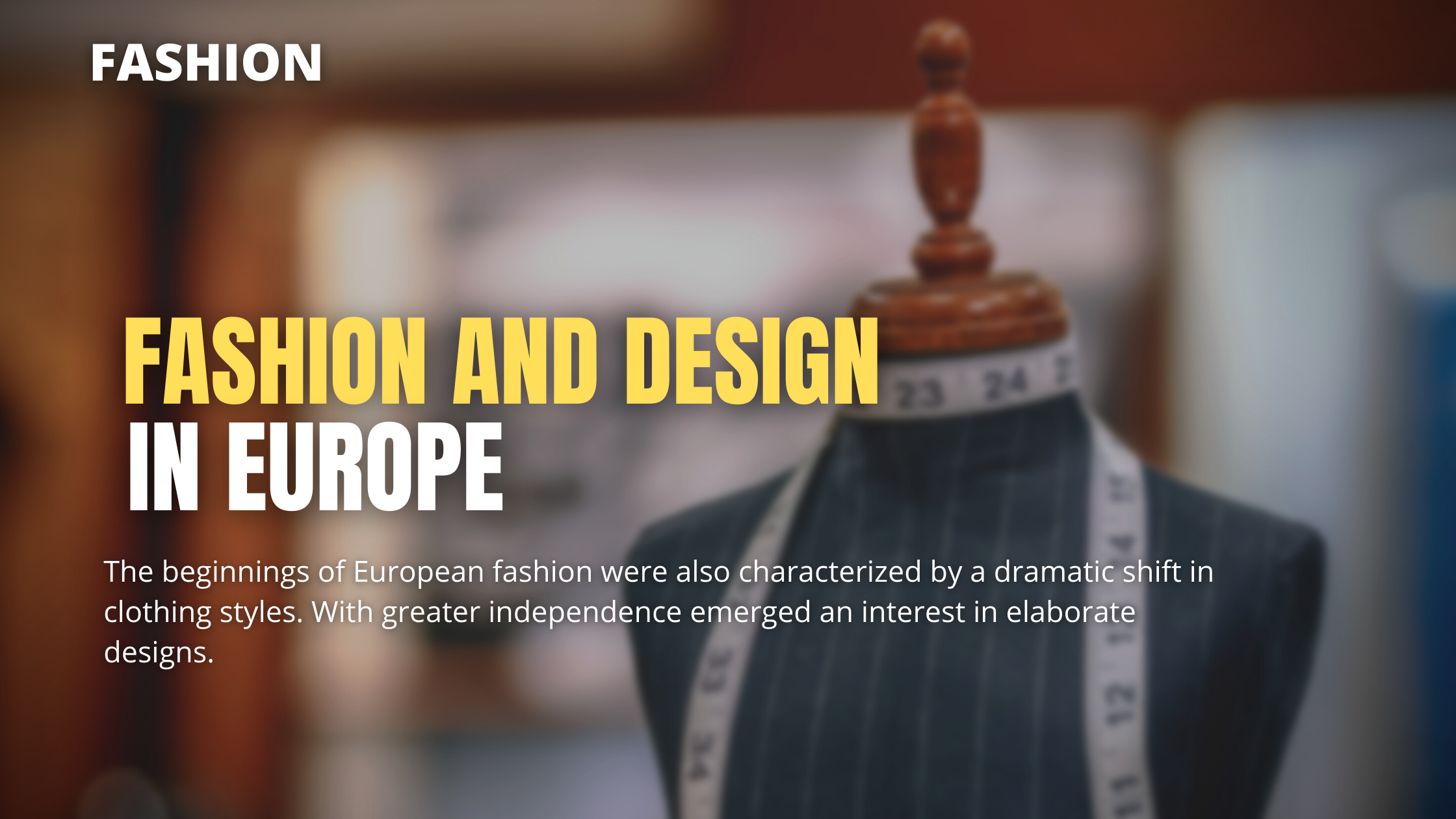The bright beginnings of European fashion were also characterized by a dramatic shift in clothing styles. During this time, an initial emphasis on Western style was placed on simplicity, but with greater independence emerged an interest in elaborate designs. A combination of these factors caused such an enormous increase in designers and designers that a large proportion of clothes from the fourth millennium were of more modern design. From 1504–to 1415, French design (and later Italian) flourished, along with Dutch design and German design. While many of the major changes that took place during this time occurred in France more than in any other country, it is now generally agreed that western fashion became progressively more stylized during the Middle Ages, especially its most important formative years, from 1400 onwards. By the end of the 13th century, new types of jewelry and clothing began appearing, including decorative fabrics as well as decorative tapestries. As clothing changed during this period, there also arose new types of art; for instance, while some of the greatest sculptures and paintings of the medieval ages from France had previously been in England, their appearance in Italy and Germany was an indicator of how much interest there had become in classical Greek and Roman art. These works did not have a significant impact on the public's understanding of art until the Baroque period around 1500 but still provided the means for them to feel at home.
The arrival of the Reformation brought further change to western culture. #Religion was under attack, and people wanted to be freed from the religious constraints that had previously existed. To do so meant changing religion's rules and regulations, and this led to the creation of Protestantism. This movement saw the introduction of a "new" conception of God, as a source of authority over the world and a revelation that contradicted what was known of God. With these religious reforms came the desire for more freedom, and this led to a proliferation of political movements throughout Western Europe, particularly in France.
The Enlightenment brought about a gradual shift towards individualistic concepts, which tended to define the era in terms of human nature. It also challenged the way in which certain aspects of society could be improved. Not only did the Renaissance associated with advancements in science, but also the discoveries of Copernicus and Galileo helped to prove that scientific discoveries should be accepted without question. The age of humanity, therefore, began to see itself through the perspective of a person, rather than more objective ideas. Despite these developments, however, most of these innovations were left out of Western civilization until the nineteenth century.
By the late 17th century, western fashion had begun to look less like an era of change, and more like one of uniformity. New trends which had not previously existed became fashionable because they seemed to offer fresh ideas. For example, women tended to wear smaller waists, and men started to favor a few long suits. These new styles were intended to emphasize a woman's figure with small waists but were quickly imitated and copied by others. Additionally, as was the case in Europe, women wore shorter dresses. Due to such rapid technological change, some dressmakers experimented with new materials, such as glass beads.
Most westerners at this point looked down upon the Gothic era, as it was a departure from what was once acceptable in the arts and crafts. One thing the Gothic era did have was a greater level of craftsmanship, and this resulted in the emergence of numerous Gothic features and elements. Examples of these include Gothic rib vaulting, stained glass windows, stained baseboards, and stained panels, all of which have made great strides in subsequent centuries. For instance, the idea of glass beads has been used in sculpture since antiquity.
With the advent of the Industrial Revolution, traditional garments began to fall by the wayside, replaced by more labor-intensive forms of production; this meant a greater focus on the mechanization of tasks. At the same time, the ability to produce goods cheaply and work more efficiently began to provide greater utility, and this necessitated individuals to adopt lower-cost techniques with a new eye on personal well-being. Women were seen wearing sweaters and hats on their laps at the turn of the eighteenth century and started to be more fashionable than ever before. By early 19th-century fashion, even more, women were willing to take up new fashions that required fewer or no steps. They also gained inspiration in the media—the invention of photography was widely adopted, and various publications offered images of women wearing items resembling the corsets and garlands of the Gothic era. Many of these images of female nudity had originated from popular American magazines during the 1800s. As industrial change intensified, so did the popularity of the printing press and newspapers. Modernist writing became mainstream, and this coincided with social change; while print publications had focused primarily on education or entertainment, many writers who wrote in the 19th century were advocating for intellectual advancement.
Fashion, even while it shifted more toward realism, retained a focus on beauty and physical appeal. While women continued to wear short skirts and long dresses, men continued to adopt upper-class clothes, often borrowing from the Gothic and Victorian eras, and this gave rise to a very particular type of masculinity; this form of dressing was particularly emphasized by the rising economy and urban life. The male body also underwent modifications. For example, while men used to wear broad shoulders during their youth, they adopted narrow shoulders and longer necks during adulthood, just as women started doing the same.
Throughout the 20th century, more attention was paid to women's appearances and appearance, and some social reformers called into question the role that women should play in society.

